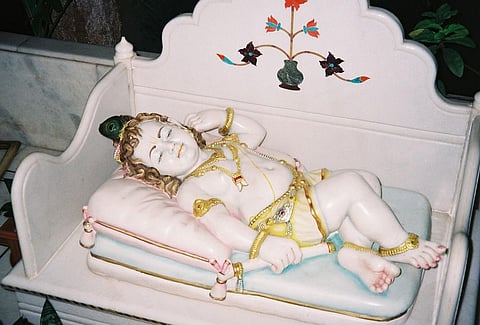Much like Diwali, various plays, dances, and songs are re-enacted from the god's early life. In temples and homes alike, painting and idols of Krishna are bathed, decorated with new clothes, jewelry, and flower garlands, and placed in a cradle behind a curtain. A shankh (conch shell) and holy chants are also played and sung to express admiration for the little Krishna. The cradle is rocked by every attendee of the festival, or as many as possible. Incense is burnt and scriptures are recited, all adding to the vibrancy of the festivities.




